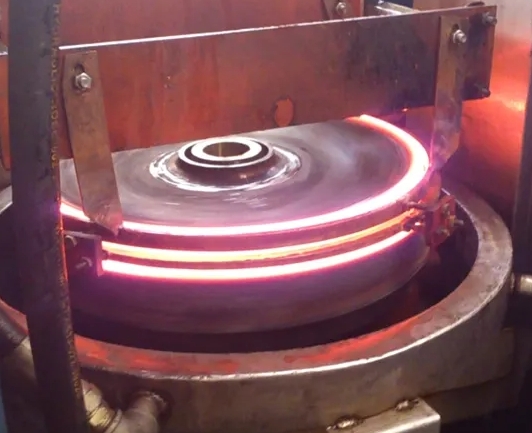- 21
- Jul
Riepilogo di dieci metodi di tempra comuni della macchina per tempra ad alta frequenza (1)
Riepilogo di dieci metodi di spegnimento comuni di macchina di tempra ad alta frequenza (1)
1. Single medium (water, oil, air) quenching
Single medium (water, oil, air) quenching: Quenching the workpiece that has been heated to the quenching temperature into a quenching medium to cool it completely. This is a simpler quenching method and is often used for carbon and alloy steel workpieces with simple shapes. The quenching medium is selected according to the heat transfer coefficient, hardenability, size and shape of the parts.
2. Doppio raffreddamento medio
Dual-medium quenching: The workpiece heated to the quenching temperature is first cooled to the Ms point in the quenching medium of a high-frequency heating machine with strong cooling capacity, and then transferred to the slow-cooling quenching medium to cool to room temperature to achieve different quenching cooling temperatures range, and has an ideal quenching cooling rate. It is used for complex shapes or large workpieces made of high carbon steel and alloy steel, and carbon tool steel is also mostly used in this method. Commonly used cooling media are water-oil, water-nitrate, water-air, oil-air. Generally, water is used as a quick-cooling quenching medium, oil or air is used as a slow-cooling quenching medium, and air is less used.
3. Martensite graded quenching
Tempra graduata martensitica: l’acciaio viene austenizzato, quindi immerso in un mezzo liquido (bagno di sale o bagno alcalino) con una temperatura leggermente superiore o inferiore alla punta di Martens superiore dell’acciaio, mantenuto per un tempo appropriato, e la punta interna ed esterna parti dell’acciaio sono trattate. Dopo che lo strato ha raggiunto la temperatura media, viene estratto per il raffreddamento ad aria e l’austenite super raffreddata viene lentamente trasformata in un processo di tempra della martensite. Viene generalmente utilizzato per piccoli pezzi con forme complesse e severi requisiti di deformazione e anche utensili e matrici in acciaio ad alta velocità e acciaio altamente legato vengono comunemente temprati con questo metodo.
4. Martensite graded quenching method below Ms point
Martensitic graded quenching method below Ms point: When the bath temperature is lower than the Ms of the workpiece steel and higher than Mf, the workpiece cools faster in the bath, and the same result as the graded quenching can be obtained when the size is larger. Commonly used for larger size low hardenability steel workpieces.
5. Bainite isothermal quenching method
Bainite isothermal quenching method: The workpiece is quenched into a bath with the lower bainite temperature of the steel at an isothermal temperature, so that the lower bainite transformation occurs. Generally, it is kept in the bath for 30~60min. There are three main steps in the bainite isothermal quenching process: ① austenitizing treatment; ② cooling treatment after austenitizing;

